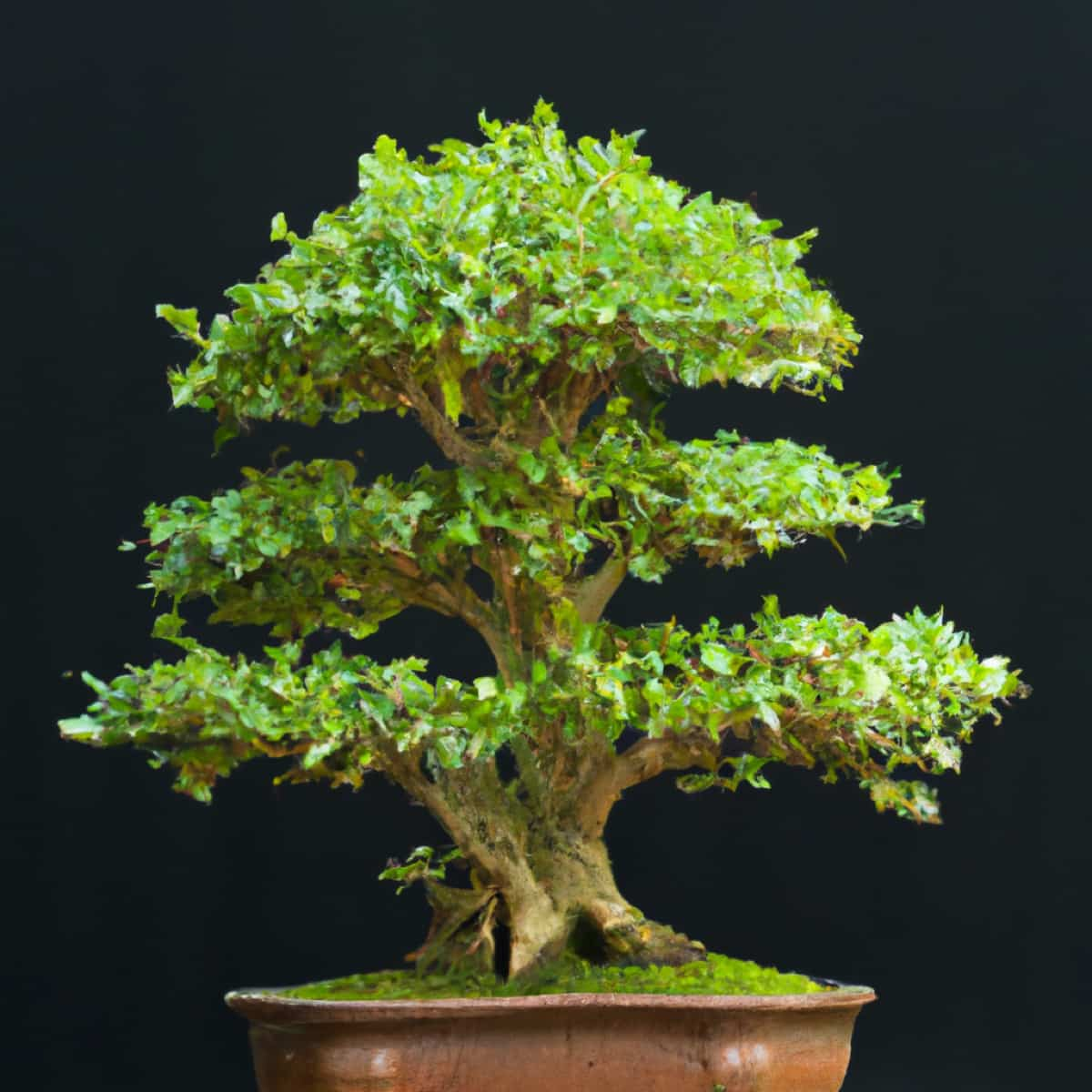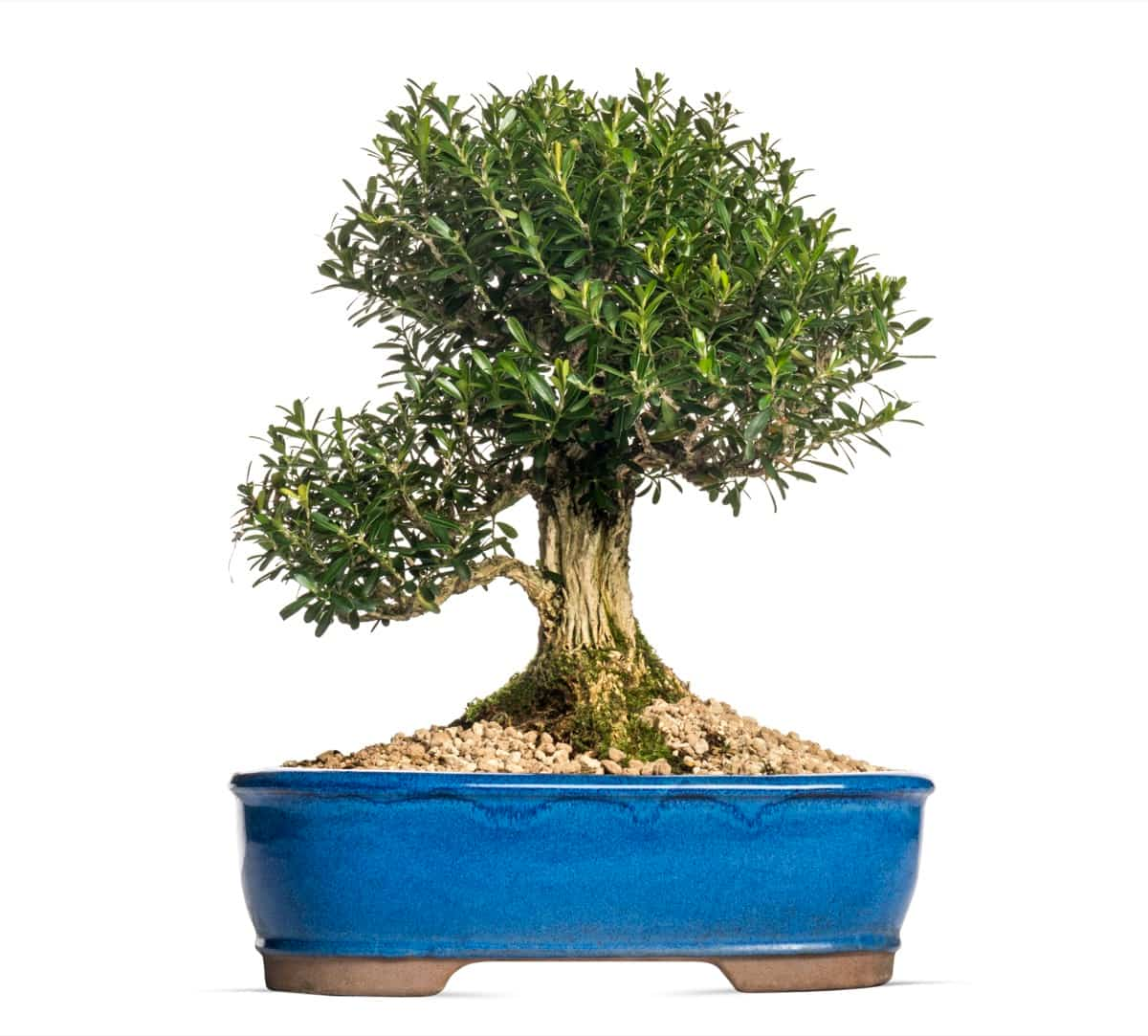Boxwood Bonsai Styles are a testament to the beauty and variety that Buxus Bonsai offers. Originating from the boxwood shrub, it is a popular choice among bonsai enthusiasts, offering a great range of styles to be explored. How to make a boxwood bonsai can be an engaging journey for any budding bonsai artist.

Whether it is a Chinese Boxwood Bonsai or a different variety, there’s always something new to learn. This article explores the different aspects of growing and maintaining Buxus Bonsai, including planting, indoor cultivation, pruning, and general care tips.
How to Grow and Care for Buxus Bonsai
How to Plant Buxus Bonsai from Seeds
Planting Buxus Bonsai from seeds is an exciting process. To start, choose good quality Buxus seeds. In a suitable container filled with compost, sow your seeds and cover them lightly with soil. It is important to keep the soil moist but not waterlogged. Place the container in a warm, well-lit area, but avoid direct sunlight, which may scorch the seeds. Germination typically occurs within a few weeks. Once the seedlings have developed a couple of leaves, they can be gently transplanted into individual pots.
Step-by-step Guide for Growing Buxus Bonsai Indoors
When considering Buxus Bonsai indoor cultivation, you must consider various factors such as light, temperature, humidity, and watering. Opt for a well-lit area with ample indirect illumination. The temperature should ideally be around 60-70°F with good air circulation. A humidifier can maintain adequate humidity levels, particularly in dry indoor environments.
Proper watering entails ensuring thorough saturation of the topsoil once it becomes dry, while also ensuring adequate drainage at the bottom of the pot to avoid waterlogging. Regular misting will help keep the leaves healthy and vibrant.
Essential Care Tips for Maintaining Healthy Buxus Bonsai
Keeping Buxus Bonsai healthy requires proper care and attention. Apply a well-balanced bonsai fertilizer regularly throughout the growing season to sustain adequate nutrient levels. Be mindful of the bonsai’s watering needs, and avoid overwatering and underwatering. Check regularly for any signs of pest infestation or disease, and treat promptly. Proper grooming of the Buxus Bonsai, which includes pruning and shaping, is also vital for maintaining its aesthetic appeal and overall health.
Best Soil Mix for Buxus Bonsai Cultivation
The best soil mix for Buxus Bonsai cultivation is well-draining and nutrient-rich. The recommended mixture often consists of a 2:1:1 ratio of akadama, pumice, and organic potting compost. This balances water retention, drainage, and nutrient content well. It’s also advisable to replace the top layer of soil every year to replenish nutrient levels and maintain the health of your Buxus Bonsai.
Pruning Techniques for Shaping Buxus Bonsai Trees
Boxwood Bonsai pruning is crucial for shaping your bonsai and promoting healthy growth. Begin by eliminating any deceased or afflicted branches, followed by determining the desired aesthetic style. Using sharp, clean bonsai shears, begin trimming the branches. Always make clean cuts close to the trunk or a leaf node. Regularly assess your work to ensure you’re happy with the shape. Patience is key when shaping a bonsai tree, as the desired shape may take several pruning sessions.
Watering Requirements for Buxus Bonsai in Different Seasons
The watering requirements for Buxus Bonsai vary with the changing seasons. During the hot summer months, the bonsai may require watering daily or every other day. In contrast, during the cooler months, watering should be reduced. Regardless of the season, it’s important to only water when the top layer of soil starts to feel dry. Utilize a watering can equipped with a delicate nozzle to adequately irrigate the pot until water flows out effortlessly from its base.
In case you missed it: How to Grow and Care for Camellia Bonsai: Planting, Pruning, and Repotting

Preventing and Treating Common Pests and Diseases in Buxus Bonsai
Buxus Bonsai can be prone to certain pests and diseases. Regularly inspect your bonsai for signs of infestation, such as discolored leaves or unusual growths. Common pests include aphids, spider mites, and scale insects. To treat, use a suitable insecticide following the manufacturer’s instructions. Fungal diseases can also occur, usually signaled by black or brown spots on leaves. In this case, remove the affected leaves and treat them with a fungicide. Preventative care includes maintaining proper watering practices and ensuring adequate air circulation.
Understanding the Ideal Light Conditions for Buxus Bonsai
Optimal lighting for Buxus Bonsai entails bright, yet indirect light. Excessive direct sunlight may cause leaf scorching, while inadequate light can result in feeble growth and diminished coloration. If you’re growing your Buxus Bonsai indoors, place it near a north or east-facing window where it will receive plenty of light but not direct sun. Regularly rotate your bonsai to ensure all sides receive equal light exposure.
Transplanting Buxus Bonsai: When and How to Do It Properly
Transplanting Buxus Bonsai is usually done every two to three years for young bonsai and every four to five years for older ones. It is best done in early spring when the bonsai is still dormant. To transplant, carefully remove the bonsai from its pot and gently tease away the old soil from the roots. Trim any excessively long or dead roots. Place a layer of fresh soil mix in the new pot, position the bonsai, and fill in around the roots with more soil, firming gently. After transplanting, water thoroughly and keep in a shaded location for a few weeks to allow it to recover.
Winter Care Guidelines for Protecting Buxus Bonsai From Frost Damage
Protecting Buxus Bonsai from frost damage during winter is vital for its survival. If temperatures drop below freezing, moving the bonsai to a more sheltered location, such as a cold frame or unheated garage is best. Ensure it receives light and check regularly to see if it needs watering. Using mulch around the pot can also help to insulate the roots from the cold. Frost cloth can be used to provide additional protection on particularly cold nights. When the threat of frost has passed, gradually reintroduce your bonsai to its usual location.
In case you missed it: How to Grow and Care for Gardenia Bonsai: Planting, Pruning, and Repotting

Conclusion
Growing and caring for Buxus Bonsai can be an incredibly rewarding, embracing a blend of horticultural knowledge, artistic creativity, and a deep appreciation for nature. Understanding and implementing proper techniques for planting, indoor cultivation, pruning, and winter protection is pivotal for a thriving bonsai.
The journey of cultivating a Boxwood Bonsai is filled with growth and learning, both for the tree and the gardener. Despite the challenges that may arise, the sheer beauty and elegance of a well-maintained Buxus Bonsai make the effort worthwhile. With patience, persistence, and proper care, you can nurture a Buxus Bonsai that embodies the tranquil allure of this ancient art form.
- Ultimate Guide to Ossabaw Island Hog: Breeding, Raising, Diet, and Care
- Ultimate Guide to Juliana Pig: Raising Facts, Size, Diet, Care, and Lifespan
- Raising Lleyn Sheep: Disadvantages, Price, Uses, Characteristics, and Care
- Ultimate Guide to Meishan Pig: Breed Facts, Breeding, Raising, and Care
- Ultimate Guide to Teacup Pigs: Raising, Diet, Lifespan, Cost, and Care
- Guide to Raising Poll Dorset Sheep: Facts, Profile, Characteristics, Uses, and Care
- Ultimate Guide to Bighorn Sheep: Characteristics, Diet, Lifespan, Breeding, and Lifecycle
- Ultimate Guide to Raising Katahdin Sheep: Farming Facts, Breed Profile, Uses, and Care
- Ultimate Guide to Raising Oreo Cows: Belted Galloways Farming Facts, Profile, Uses, and Care